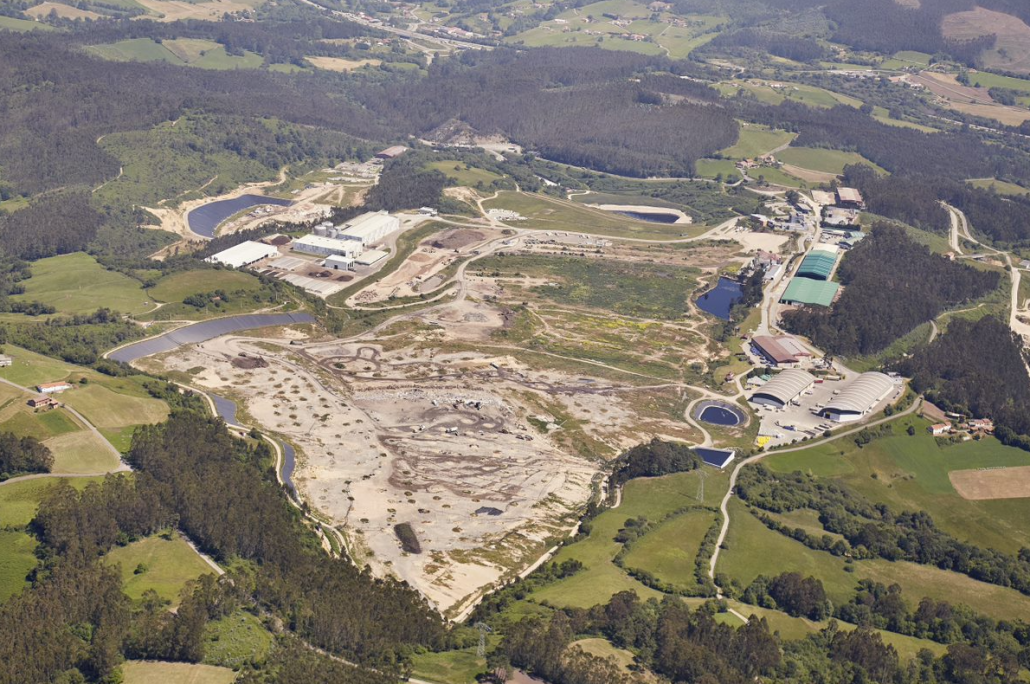The waste treatment processes at COGERSA facilities generate wastewater that must be treated. Notably, the liquids emanating from the Central Landfill exceed a flow rate of 240,000 m³ annually. Additionally, the liquid digestate or liquid stream from the Anaerobic Digestion (AD) plant—a key technology for valorizing the separately collected organic fraction (OFMSW) by transforming biowaste into biogas and soil amendments—is another significant source. This liquid stream, which results from the dehydration of digestate in centrifugal separators, has an even more complex composition than leachates. Another process that generates wastewater includes the runoff from the mechanical-biological treatment (MBT) pit.

Image 1. Leachate sample with the leachate pond and the landfill site in the background (left). Liquid digestate sample with the digesters in the background (right)
The COGERSA waste treatment center is equipped with two wastewater treatment plants that use reactors with biological sludge. These systems rely on a consortium of nitrifying and denitrifying bacteria to convert ammonium into nitrates and molecular nitrogen while also consuming part of the readily degradable carbon. Subsequently, ultrafiltration separates treated water (permeate) from the biological sludge. This purification process generates excess biological sludge, which is dehydrated using a centrifugal separator. The resulting permeate has a significantly lower COD compared to the initial wastewater, although it remains notable due to fulvic and humic acids that are not degraded by the sludge. To further reduce COD, the system employs activated carbon, which retains organic compounds.
The main difference between the two treatment plants lies in their operating pressure: one operates under pressure (2.5 bar), while the newer plant operates at atmospheric pressure. Both are highly effective in treating leachates and other complex wastewater streams, but they consume significant amounts of energy (especially the pressurized system) and methanol, and they do not enable resource recovery.
Given the high levels of carbon, nitrogen, and phosphorus in this wastewater, these elements can potentially be recovered in a circular economy framework. This has motivated COGERSA to participate in the LIFE INFUSION project, hosting a pilot plant in its Open Lab to explore more circular and sustainable purification systems.

Table 1. Comparison of wastewater characteristics and permeate (without activated carbon) from COGERSA’s Waste Treatment Facility
LIFE INFUSION
The LIFE INFUSION project is co-funded by the LIFE Programme of the European Union under contract number LIFE19 ENV/ES/000283.
The information published in this web page reflects only the LIFE INFUSION project beneficiaries’ views and work. The European Commission is not responsible for any use that may be made of the information it contains.















